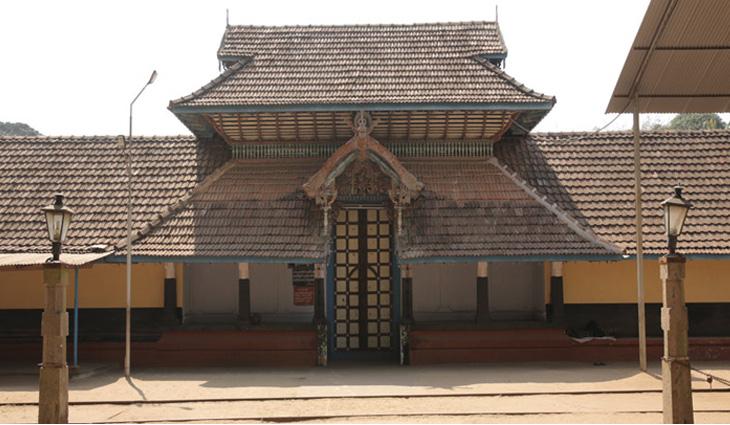Azheekal Shree Varaha Temple
Situated in the vicinity of Pallippuram near Cherai, the Sree Varaha temple at Azheekal in Kerala is the only sampoornakshetra or 'complete temple' of the nagara type in South India. The Sree Varaha temple houses all the seven deities of the Gowda Saraswat Brahmins of Kerala. Azheekal forms a main settlement of Gowda Saraswat Brahmin community. And for that reason, they have established as many as 31 major temples, besides a good number of family temples here.
The history of Azheekkal Shree Varaha Temple is related to the history of Goud Saraswat Brahmins and their exodus. Legends say that Saraswat Brahmins were descendants of Saraswata Maharshi, son of Dadheechi Maharshi who stayed on the banks of River Saraswati in Kashmir. Skanda Purana says that Sage Parasurama brought 66 families from there to settle down at Goa, which came to know as Konkan. They were subjected multiple assaults in time. Alaudin Khilji attacked them in 1294, Mohammed Ghazni in 1357, Bijapur Sultan in 1498 and finally, the Portuguese King Toao III ordered their expulsion from Goa in 1559. While fleeing, many of these families took their Kula devatas along with them. One of the families bearing family name 'Kastoori' reached Azheekkal near Cherai and installed a temple for his family deities Varahamoorthy, Devaki and Krishnamoorthy.
The temple has a large open ground in the front, not available in other GSB temples in Kerala, and typical of major temples of Kerala like Trichur, Ettumanoor and Kottayam.
The temple has a covered Seevelipura (a roofed pathway) as seen in picture around the Nalambalam. Such a structure is not seen in other temples. Lord is taken around the temple along the Seevelipura. The devotees also can go around even in rain. Sree Varaha and Sree Venkateswara installed side by side and worshiped as single Moorthy. The Dwaja with decorated roof (Dwaja Mandapam) with wood carvings is a unique feature of this temple. The Dwaja was constructed in 1900 AD. The temple at Azheekal was close to seashore. Due to continuous sea erosion and high tides, the temple and the local community suffered many losses. Many Yogakkars left the place in 1866 AD and migrated to nearby places like Kuzuppally, Cherai, Ernakulam in Cochin state and also to places in Travancore state. The mahajans purchased land in Cherai in 1867 AD and constructed Agrasala and installed the idols shifted from Azheekal. The old temple at Azheekal was also dismantled and brought to Cherai.
The idol of Sree Varaha was installed at Azheekal in 1565. Though these temples are primarily houses of worship, they also serve as centers of the community's religious, cultural and aesthetic life. Additionally, the temples have preserved the community's distinct culture, identity, mode of worship and language. The famous temple ratham (chariot) here is a rarity in temple architecture. It was dedicated to the presiding deities in 1909 and the rathaveethi (chariot's street) was also constructed. The restored temple is now maintained by the Azheekal Varaha Devaswom Board.
Location
Cherai
Main Deity
Sree Varaha Moorthy
Other Deities
Sree Venkatachalapathy, Lakshmi Devi and Bhoomi Devi
Festivals
The festival take place twice in a year. The Ratholsav is a specialty and attended by devotees in large numbers. The chariot is pulled around the temple by devotees.
Main Offerings
Pushpanjali, Bhagya Sooktha Pushpanjali, Sree Sooktha Pushpanjali, Swayamvara Sooktha Pushpanjali, Aikya Sooktha Pushpanjali, Purusha Sooktha Pushpanjali, Saraswatha Sooktha Pushpanjali, Sahasra Nama Pushpanjali, Neyyu Payasam, Thrimadhuram, Panjasara Payasam, Kadina Payasa.
How To Reach
By Air: Cochin International Airport is the nearest airport situated at 27.4KMs from the temple.
By Rail: Aluva station is 23.5KMs from the temple.
By Road: Aluva KSRTC bus station is 23.3KMs from the temple.
